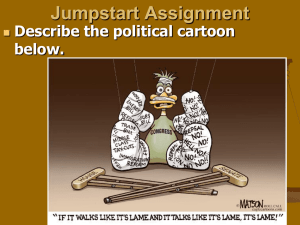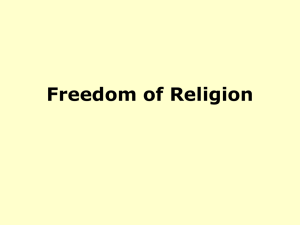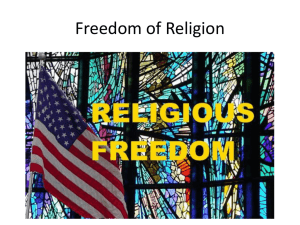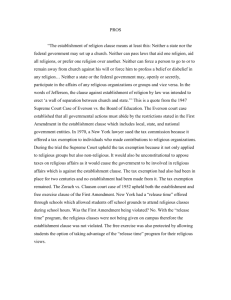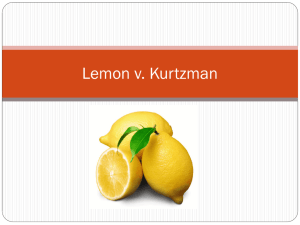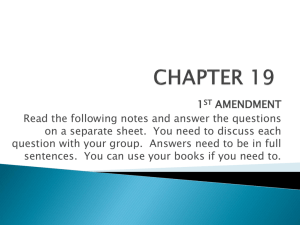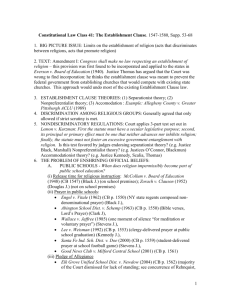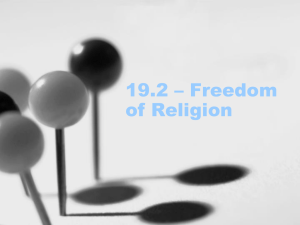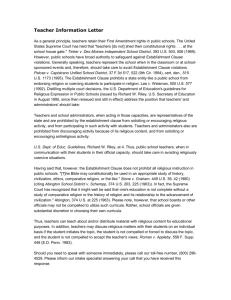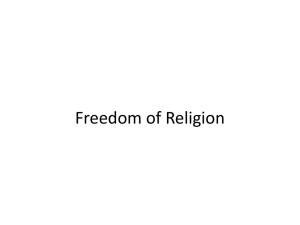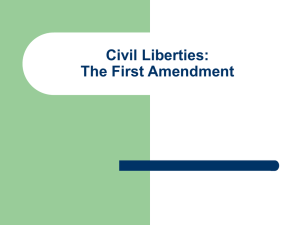Civil Liberties v. Civil Rights - Coach Baker's Class
advertisement
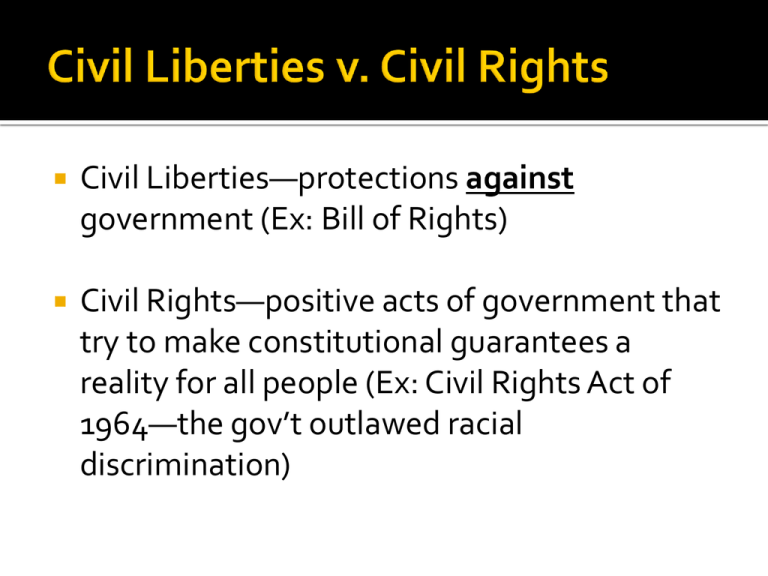
Civil Liberties—protections against government (Ex: Bill of Rights) Civil Rights—positive acts of government that try to make constitutional guarantees a reality for all people (Ex: Civil Rights Act of 1964—the gov’t outlawed racial discrimination) Rights are relative, not absolute!!!!! Your rights end where someone else’s rights begin (i.e. your rights are limited to protect other people’s rights) All persons have the right to do as they please as long as they do not infringe on the rights of others Establishment Clause—”Congress shall make no law respecting an establishment of religion” Free-Exercise Clause—”or prohibiting the free exercise thereof” Thomas Jefferson said that the Establishment Clause set up “a wall of separation between church and state.” Do we in the US have separation of church & state? Do you see religion in our government? Churches exempt from taxes, oath of office mentions God, pledge of allegiance mentions God, chaplains in the military, Congress and many state legislatures open with prayer, coins/currency reference God Should public tax money be spent on buses for private parochial schools as well as public? Legal! Everson v. Board of Education (1947) the court upheld NJ state law that provided tax supported buses to all schools, including parochial, because it was a safety issue Released Time—release students during school hours to attend religious classes? It depends upon where the classes are held McCollum v. Board of Education (1948)-the court struck down the released time program in Champaign, Illinois, because it used public facilities for religious purposes Zorach v. Clausen (1952)—the court upheld NYC’s released time program because the religious classes were held in private places (like homes) The State Board of Regents of New York required the recitation of a 22-word nonsectarian prayer at the beginning of each school day. Illegal!! Engel v. Vitale (1962)—court found this unconstitutional because religious beliefs were embodied in the prayer Stone v. Graham (1980)-struck down a Kentucky law to post Ten Commandments in all public school classrooms Schools cannot sponsor religious exercises Equal Access Act of 1984—public schools that get federal money must allow student religious groups to meet in the school on the same terms as other organizations The Lemon Test 1. The purpose of the aid must be secular, not religious 2. Its primary effect must neither advance nor inhibit religion 3. It must avoid an “excessive entanglement of government with religion” At Christmas, the county places a large display celebrating the birth of Jesus on the grand stairway to the courthouse, with a banner proclaiming “Glory to God in the Highest”. Illegal County of Allegheny v. ACLU (1989)-the court held that the display “endorsed Christian doctrine”, which violated the 1st amendment Religious displays are allowed if they also feature nonreligious objects such as candy canes & Santa’s sleigh or if they include other religious objects (menorah) Free Exercise Clause—guarantees each person the right to believe whatever he or she chooses in matters of religion Reynolds, a Muslim, moves here from Kenya with his 2 wives. The practice, polygamy, was allowed back home and is accepted by the teachings of his church. The US only recognizes one of the women as his legal wife and tells him he can no longer have 2 wives. Is his first amendment right to freedom of religion being infringed upon? No Limits on freedom of religion—you cannot break laws, offend public morals, or threaten the safety of the community No polygamy, no poisonous snake handling, no illegal drug use, etc.
